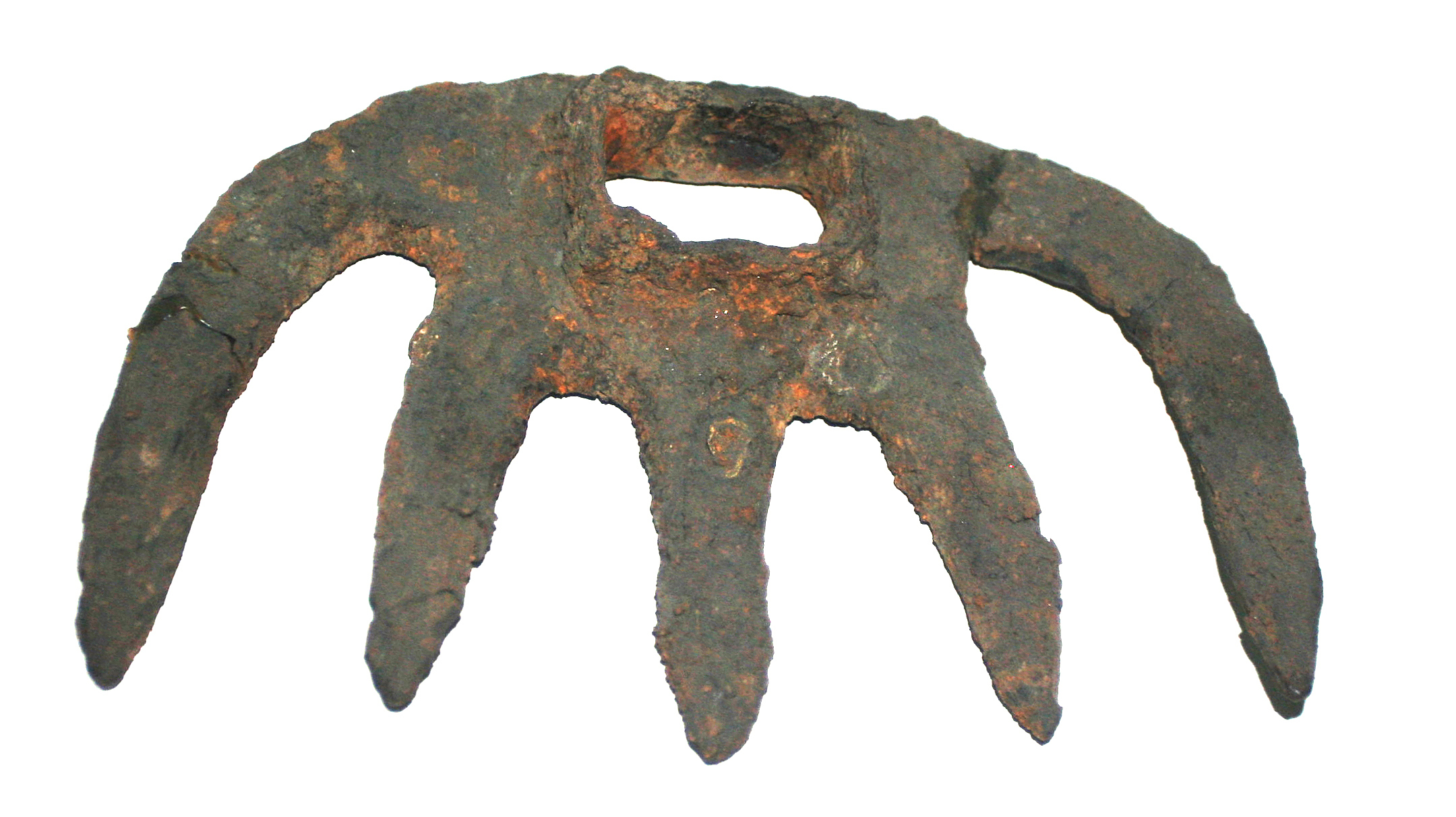
Five teetth rake dates back to the Warring States Period (770-476BC).(PHOTO: VCG)
By?BI?Weizi
Archaeological discoveries show that Chinese cast iron technology dates back to Western Zhou Dynasty (1045-771 BC) when iron and steel objects were used in many areas, about two millennia before the earliest similar evidence from Europe. China's epoch-making contributions to the development of iron casting and iron smelting have been seen throughout history.
China's first advancement was annealing technology, which was introduced during the Warring States period (475-221BC). This method is primarily intended to soften castings in order to improve their machinability by breaking down pearlite and minimizing or removing large amounts of eutectic carbides, helping Chinese people develop the technological path of casting to manufacture agricultural tools, in contrast to the iron firing techniques of other civilizations.
Another significant innovation was iron smelting, which is the main method of turning cast iron into steel, or cooked iron, in ancient China and was invented around the Western Han Dynasty(202BC-8AD). Smelting means heating pig iron into semi-liquid and liquid form to finally obtain steel. Until the middle of the eighth century, this method was invented in England, which played a great role in its industrial revolution.
The?evidence?shows?ancient?Chinese iron casting and smelting technology was very advanced and ahead of the world in the early days of development.
The trio will conduct a series of experiments in fields such as life science, fluid physics, combustion science and materials science. Notably, this is the first time that fruit flies have been taken on a Chinese space mission as experimental subjects. What made scientists choose fruit flies? What experiment will they undergo?
